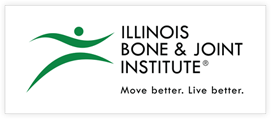Labral Tear Treatment Options
What are the treatment options for labral tears?
Labral tears with no symptoms should be observed, and if symptoms develop nonsurgical management may be considered. Smaller tears may not require any treatment. The type of treatment will depend on the location, size, and severity of the tear.
Nonsurgical management is the preferred first line treatment, after a period of rest and avoiding activities that stress the shoulder. Nonsurgical management is also appropriate for older patients who do not engage in high impact activities. Most people will not need surgery and if they do it will likely be a minimally invasive arthroscopic procedure.
Nonsurgical management involves anti-inflammatory medications to decrease pain and swelling, icing, activity modification, and physical therapy to strengthen shoulder muscles and improve range of motion. Sometimes, steroid injections may help to reduce symptoms so the patient can participate in physical therapy. Occasionally, there may be a role for orthobiologic injections.
Surgical intervention is indicted if nonoperative management fails and symptoms persist and interfere with sports related activities or interferes with the activities of daily living. Surgery is also indicated when the shoulder is at risk for continued dislocation, or the tear worsens with nonsurgical treatment.
Surgical management involves a consideration of the patient’s age, the type and severity of the tear, other injuries, functional requirements, occupational demands, and sport-specific goals. It is often performed as a minimally invasive arthroscopic procedure but may also require open surgery.The surgical procedure depends upon the type and extent of the tear.
- A SLAP lesion is a tear in the top part of the labrum. It is often caused by a fall or blow to the shoulder and may also affect the bicep tendon. When the tear is confined and doesn’t involve the bicep tendon, Dr. Patel can perform surgery to remove the torn pieces (debridement) or repair the tear depending on the age, severity and location.
- A Bankart lesion is a tear in the anterior labrum that stabilizes the shoulder. It is usually caused by a shoulder dislocation in young patients. If the tear is minor, sometimes nonsurgical treatment with physical therapy may be all that is needed. However, if the shoulder is unstable, surgery will be necessary to reattach the labrum and ligaments and tighten the shoulder capsule.
Arthroscopy is minimally invasive surgery to view, diagnose and treat problems inside the shoulder joint. An arthroscope is a small thin tube that is inserted into the shoulder joint with a small incision. This permits Dr. Patel to see inside the joint to evaluate the injuries. Images from the arthroscope are projected on to monitor screen. Tears can be surgically repaired with small, thin instruments inserted through another small incision.
During surgery, Dr. Patel will also evaluate shoulder stability. If there is instability in addition to a labral tear, the Dr. Patel must perform the necessary repairs to stabilize the joint in addition to repairing the tear. If the shoulder is stable and the only problem is a labral tear, he can repair or remove the damaged tissue. Torn tendons or ligaments will be repaired at the same time.
The length of recovery depends on the type, severity and location of the tear, and the type of surgery. Patients who undergo arthroscopic repair can expect less pain and shorter recovery. Patients who undergo open surgical repair can expect more pain and a longer recovery. Regardless of the type of surgery, after surgery a sling will be necessary for the first 4-6 weeks to protect the joint.
Recovery is geared to restoring range of motion and strength. During the first 4-6 weeks the patient will wear a sling to protect the shoulder. Physical therapy will involve gentle, passive range of motion exercises. After that strengthening and flexibility exercises will begin. Athletes may be able to begin sport specific exercises at about 3-4 months post-surgery, to improve mechanics and prevent repetitive injury. Complete healing and full recovery can take 4-6 months. The good news is that a substantial majority of patients will regain full use of the shoulder after surgery.
Dr. Ronak M. Patel is a double board-certified orthopaedic surgeon and sports medicine physician. He completed his bachelor’s degree, medical degree, and residency training at Northwestern University. He, then completed his fellowship training at the Cleveland Clinic. He specializes in the treatment of complex knee, shoulder and elbow injuries and degenerative conditions. Contact him to schedule a consultation to learn more about how he can help you return to the life you love and the activities that make life worth living. He serves teens and adults in Chicagoland and NW Indiana.
At a Glance
Ronak M. Patel M.D.
- Double Board-Certified, Fellowship-Trained Orthopaedic Surgeon
- Past Team Physician to the Cavaliers (NBA), Browns (NFL) and Guardians (MLB)
- Published over 49 publications and 10 book chapters
- Learn more

